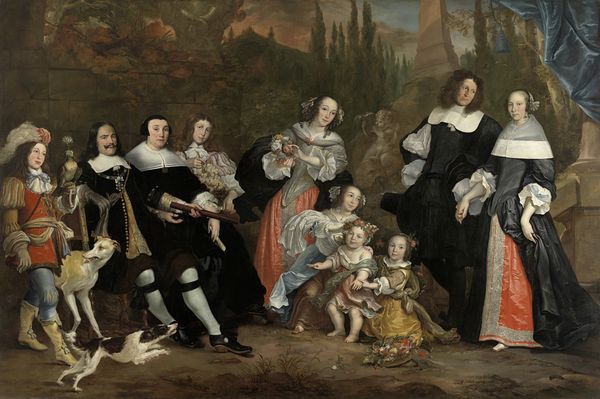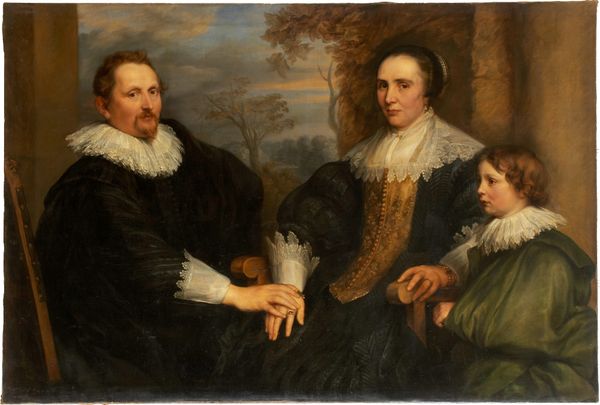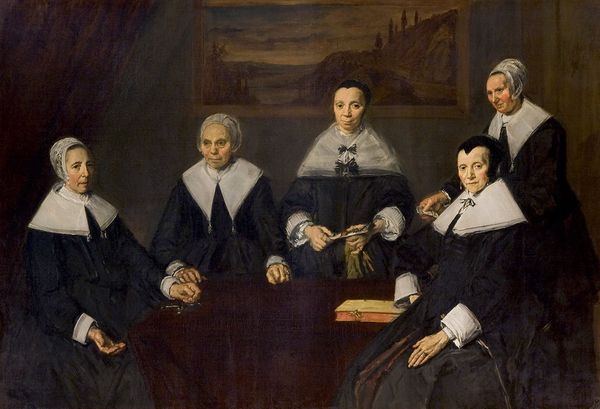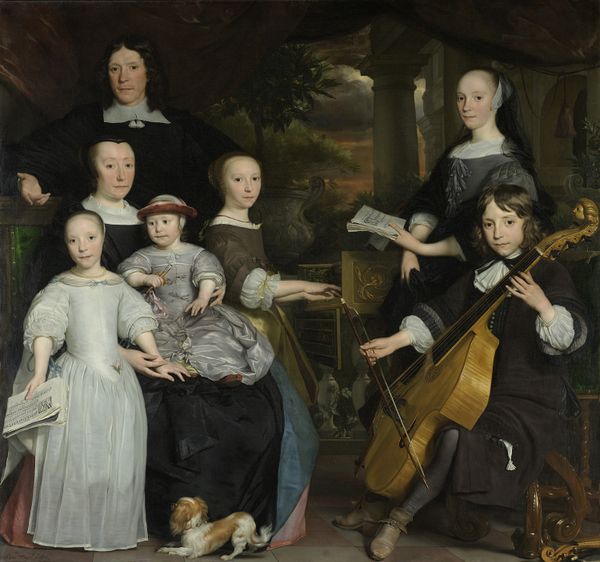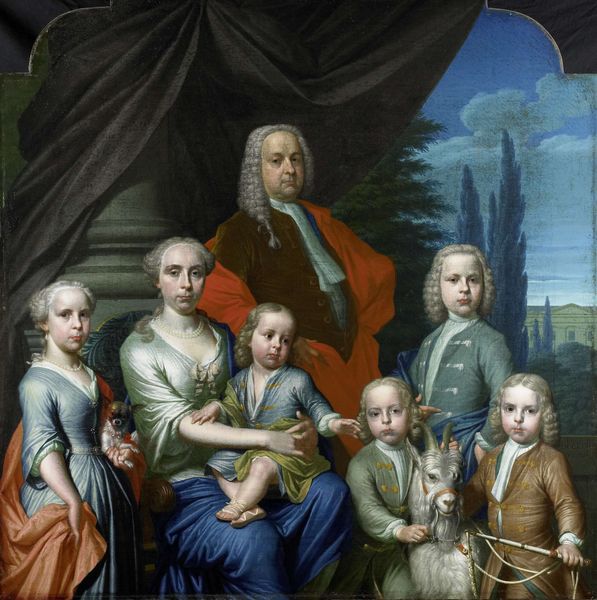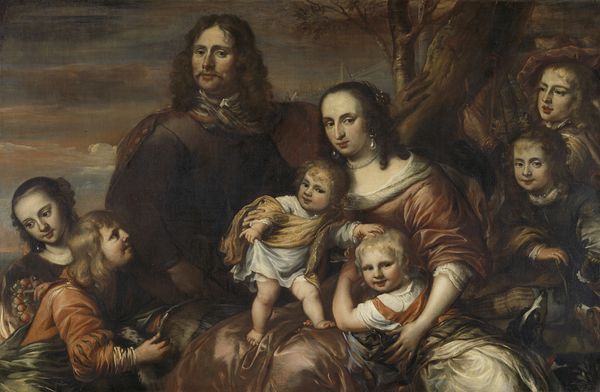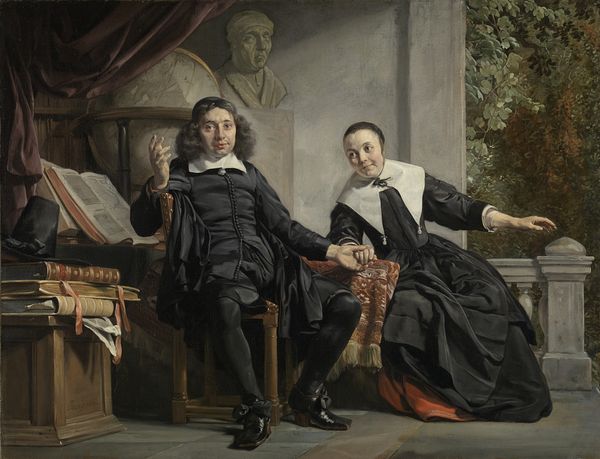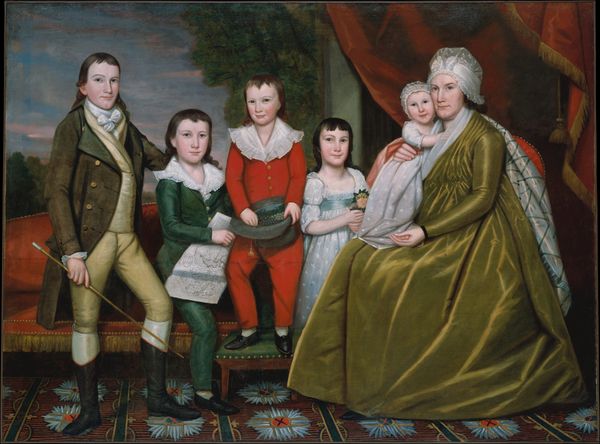
painting, oil-paint
#
portrait
#
painting
#
oil-paint
#
group-portraits
#
genre-painting
#
rococo
Dimensions: 62 x 75 cm
Copyright: Public domain
Curator: It has a rather somber, unassuming mood. There’s something quietly powerful about the arrangement of these faces. Editor: This is "The Servants of the Painter," crafted by William Hogarth around 1750. What we are seeing is now housed at the Tate Modern. It's an oil on canvas painting, a grouping that seems…well, what visual threads do you follow in reading it? Curator: It’s how they are framed—almost crammed—together. A tight cluster of faces. The white bonnets worn by the women pull your eye in distinct directions. The servants all avoid direct engagement, except the central figure. The boy near the top seems apprehensive, withdrawn from his gaze. Editor: I read their averted gazes as emblematic of their position—perhaps an imposed humility in service. Social rank during the Rococo era had a vocabulary that paintings visualized—often without sentimentality. It wasn't uncommon for artists of the period to depict the lives of those who labored in their homes and studios, though rarely with this kind of focused attention. Hogarth is doing more than genre painting here. Curator: Definitely. Look at the visual echo between the faces— the angles of their heads and noses mimic each other as if he is drawing out underlying relations and interdependencies, yet without sentimentalising them as one would in a family portrait. It highlights a very particular social choreography, no? And the uniformity suggested through this careful arrangement has a subtle subversive energy to it. It could signal a collectivity, despite their difference in age and roles. Editor: That’s insightful. It highlights the political dimension here, showing how such pieces offered commentary on emergent class structures, and that Hogarth may be less of an objective recorder than we might first expect. Curator: The faces themselves remain puzzles. There’s individuality etched in each one. Despite being, as you pointed out, social types within a specific economy, we also feel the weight of their personal lives. It gives the piece an enigmatic presence that remains unresolved. Editor: Exactly. Perhaps its resistance to being neatly categorized is its greatest strength.
Comments
No comments
Be the first to comment and join the conversation on the ultimate creative platform.
